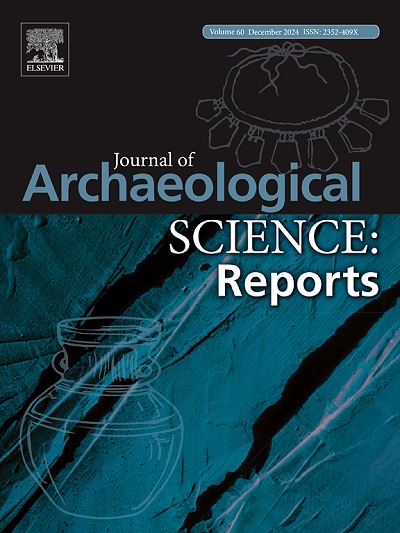Macrobotanical remains of wild rice during the Late Holocene in the Southernmost region of the La Plata Basin (Argentina)
IF 1.5
2区 历史学
0 ARCHAEOLOGY
引用次数: 0
Abstract
This paper presents the archaeobotanical analysis from four archaeological sites located in the southern sector of the La Plata Basin, specifically within the lower stretch of the Paraná River (Argentina). The sites Los Tres Cerros 1 and 2, Cerro de las Pajas Blancas 1 and La Calavera have been culturally assigned to the Goya-Malabrigo archaeological entity, which corresponds to hunter-gatherer-fisher and horticultural societies who lived in aquatic environments and are known for constructing earthen mounds. The application of manual flotation for the first time at three of these sites enabled the recovery of wild rice caryopses (Oryzoideae), a significant food resource for various pre-Columbian societies across the American continent. These findings, along with previous botanic microremains evidence, highlight wild rice as a key subsistence resource in pre-Hispanic economies of the region, accessible in vast plain areas subject to recurrent flooding and annual river surges. Furthermore, the results are discussed in relation to other archaeological, ethnohistorical and ethnographic cases of economies based on rice exploitation across the Americas.
阿根廷拉普拉塔盆地最南端晚全新世野生稻的宏观植物学遗迹
本文介绍了位于拉普拉塔盆地南部的四个考古遗址的考古植物学分析,特别是在帕拉纳河(阿根廷)的下游。Los Tres Cerros 1号和2号、Cerro de las Pajas Blancas 1号和La Calavera遗址在文化上属于戈雅-马拉布里戈考古实体,这与生活在水生环境中的狩猎-采集-捕鱼和园艺社会相对应,他们以建造土丘而闻名。其中三个遗址首次采用人工浮选技术,使野生稻颖果(稻科)得以恢复,这是美洲大陆各个前哥伦布时代社会的重要食物资源。这些发现,连同之前的植物微遗迹证据,突出了野生水稻是该地区前西班牙经济的关键生存资源,在遭受经常性洪水和年度河流汹涌的广大平原地区可以获得。此外,研究结果还与美洲其他以水稻开发为基础的经济的考古、民族历史和民族志案例进行了讨论。
本文章由计算机程序翻译,如有差异,请以英文原文为准。
求助全文
约1分钟内获得全文
求助全文
来源期刊

Journal of Archaeological Science-Reports
ARCHAEOLOGY-
CiteScore
3.10
自引率
12.50%
发文量
405
期刊介绍:
Journal of Archaeological Science: Reports is aimed at archaeologists and scientists engaged with the application of scientific techniques and methodologies to all areas of archaeology. The journal focuses on the results of the application of scientific methods to archaeological problems and debates. It will provide a forum for reviews and scientific debate of issues in scientific archaeology and their impact in the wider subject. Journal of Archaeological Science: Reports will publish papers of excellent archaeological science, with regional or wider interest. This will include case studies, reviews and short papers where an established scientific technique sheds light on archaeological questions and debates.
 求助内容:
求助内容: 应助结果提醒方式:
应助结果提醒方式:


